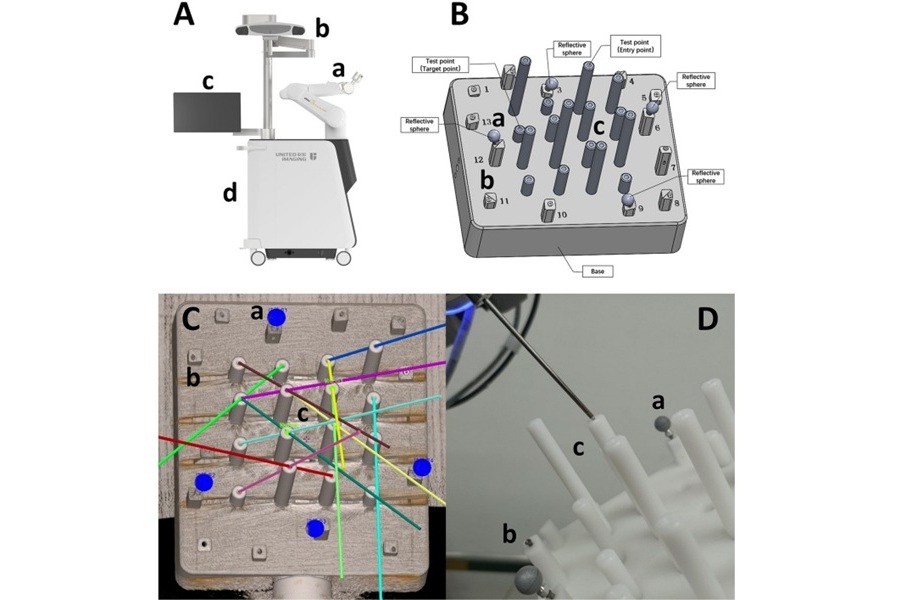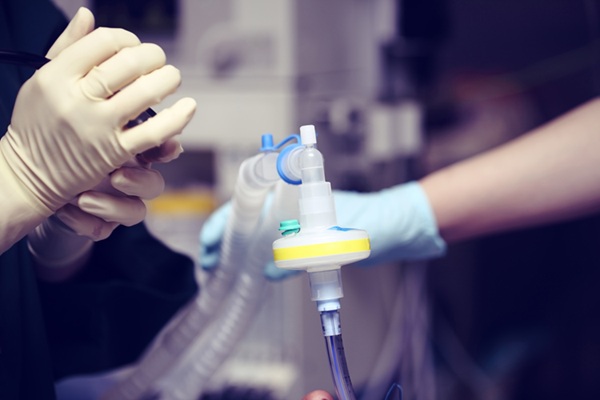Simple Impedance Measurement Detects Dehydration
|
By HospiMedica staff writers Posted on 03 Jan 2008 |
A redesigned medical device that monitors a person's hydration level could improve survival odds for people medically at risk from dehydration or congestive heart failure (CHF).
Scientists at the Oak Ridge National Laboratory (ORNL, TN, USA) improved and miniaturized an existing device called The ZOE Fluid Status Monitor, used primarily in home health care applications, in order to improve the product by making it more robust, smaller, less expensive, and capable of remote monitoring. The ZOE device measures thoracic Zo (base impedance)--a measurement of the electric current traveling from the top to the bottom of the thorax. This is accomplished by placing one electrode at the top and another at the bottom of the breastbone. The smaller the resistance (measured in ohms) the more fluid is inside the chest cavity. The normal range for humans is between 19 ohms and 30 ohms; values lower than 19 indicate that a person may be overhydrated, while values exceeding 30 indicate dehydration. A wearable wireless version of the ZOE instrument, ZOEwi, will allow monitoring during activity and is planned for market introduction in 2008. The ZOE is a product of Noninvasive Medical Technologies (Las Vegas, NV, USA).
"Studies have shown that up to 80% of troops become dehydrated while performing their duties, and that's a major concern to the military because the soldiers are not able to perform at peak levels,” said Katy DeMarr, vice president of government relations at Noninvasive Medical Technologies. "Similarly, high school and college athletes would benefit greatly from knowing their hydration levels.”
Dehydration symptoms generally become noticeable after 2% of one's normal water volume has been lost, and include thirst, decreased urine volume, abnormally dark urine, tiredness, lack of tears, headaches, dry mouth, and dizziness when standing due to orthostatic hypertension. As dehydration increases, symptoms worsen. With 10% to 15% fluid loss, muscles may become spastic, skin may shrivel and wrinkle, vision may dim, urination will be greatly reduced and may become painful, and delirium may begin. Losses greater than 15% are usually fatal.
Related Links:
Oak Ridge National Laboratory
Noninvasive Medical Technologies
Scientists at the Oak Ridge National Laboratory (ORNL, TN, USA) improved and miniaturized an existing device called The ZOE Fluid Status Monitor, used primarily in home health care applications, in order to improve the product by making it more robust, smaller, less expensive, and capable of remote monitoring. The ZOE device measures thoracic Zo (base impedance)--a measurement of the electric current traveling from the top to the bottom of the thorax. This is accomplished by placing one electrode at the top and another at the bottom of the breastbone. The smaller the resistance (measured in ohms) the more fluid is inside the chest cavity. The normal range for humans is between 19 ohms and 30 ohms; values lower than 19 indicate that a person may be overhydrated, while values exceeding 30 indicate dehydration. A wearable wireless version of the ZOE instrument, ZOEwi, will allow monitoring during activity and is planned for market introduction in 2008. The ZOE is a product of Noninvasive Medical Technologies (Las Vegas, NV, USA).
"Studies have shown that up to 80% of troops become dehydrated while performing their duties, and that's a major concern to the military because the soldiers are not able to perform at peak levels,” said Katy DeMarr, vice president of government relations at Noninvasive Medical Technologies. "Similarly, high school and college athletes would benefit greatly from knowing their hydration levels.”
Dehydration symptoms generally become noticeable after 2% of one's normal water volume has been lost, and include thirst, decreased urine volume, abnormally dark urine, tiredness, lack of tears, headaches, dry mouth, and dizziness when standing due to orthostatic hypertension. As dehydration increases, symptoms worsen. With 10% to 15% fluid loss, muscles may become spastic, skin may shrivel and wrinkle, vision may dim, urination will be greatly reduced and may become painful, and delirium may begin. Losses greater than 15% are usually fatal.
Related Links:
Oak Ridge National Laboratory
Noninvasive Medical Technologies
Latest Critical Care News
- Earlier Blood Transfusion Could Reduce Heart Failure and Arrhythmia in Heart Disease Patients
- 'Smart' Shirt Detects Epileptic Seizures in Real Time
- Skin Patch Measures Effectiveness of Flu/COVID Vaccines in 10 Minutes
- Complete Revascularization Reduces Risk of Death from Cardiovascular Causes
- Tiny Fish-Inspired Robots Navigate Through Body to Deliver Targeted Drug Therapy
- Coronary Artery Stenosis Could Protect Patients from Pulmonary Embolism Effects
- Sweat-Powered Sticker Turns Drinking Cup into Health Sensor
- Skin-Mounted 3D Microfluidic Device Analyzes Sweat for Real-Time Health Assessment
- New Therapeutic Brain Implants to Eliminate Need for Surgery
- Stem Cell Patch Gently Heals Damaged Hearts Without Open-Heart Surgery
- Biomaterial Vaccines to Make Implanted Orthopedic Devices Safer
- Deep Learning Model Predicts Sepsis Patients Likely to Benefit from Steroid Treatment
- Programmable Drug-Delivery Patch Promotes Healing and Regrowth After Heart Attack
- Breakthrough Ultrasound Technology Measures Blood Viscosity in Real Time
- Magnetically Activated Microscopic Robotic Swarms Could Deliver Medicine Inside Body
- Frequent ECG Use Can Identify Young People at Risk of Cardiac Arrest
Channels
Surgical Techniques
view channel
Ablation Reduces Stroke Risk Associated with Atrial Fibrillation
Atrial fibrillation (AFib) greatly increases the risk of stroke, blood clots, heart failure, and death, and millions of people in the U.S. are expected to be affected in the coming years.... Read more
Optical Tracking Method Identifies Target Areas in Robot-Assisted Neurosurgery
Epilepsy occurs when nerve cells misfire and produce uncontrolled electrical bursts in the brain, leading to seizures. While most patients respond to medication, about 30% require more advanced intervention.... Read morePatient Care
view channel
Revolutionary Automatic IV-Line Flushing Device to Enhance Infusion Care
More than 80% of in-hospital patients receive intravenous (IV) therapy. Every dose of IV medicine delivered in a small volume (<250 mL) infusion bag should be followed by subsequent flushing to ensure... Read more
VR Training Tool Combats Contamination of Portable Medical Equipment
Healthcare-associated infections (HAIs) impact one in every 31 patients, cause nearly 100,000 deaths each year, and cost USD 28.4 billion in direct medical expenses. Notably, up to 75% of these infections... Read more
Portable Biosensor Platform to Reduce Hospital-Acquired Infections
Approximately 4 million patients in the European Union acquire healthcare-associated infections (HAIs) or nosocomial infections each year, with around 37,000 deaths directly resulting from these infections,... Read moreFirst-Of-Its-Kind Portable Germicidal Light Technology Disinfects High-Touch Clinical Surfaces in Seconds
Reducing healthcare-acquired infections (HAIs) remains a pressing issue within global healthcare systems. In the United States alone, 1.7 million patients contract HAIs annually, leading to approximately... Read moreHealth IT
view channel
Printable Molecule-Selective Nanoparticles Enable Mass Production of Wearable Biosensors
The future of medicine is likely to focus on the personalization of healthcare—understanding exactly what an individual requires and delivering the appropriate combination of nutrients, metabolites, and... Read moreBusiness
view channel
Philips and Masimo Partner to Advance Patient Monitoring Measurement Technologies
Royal Philips (Amsterdam, Netherlands) and Masimo (Irvine, California, USA) have renewed their multi-year strategic collaboration, combining Philips’ expertise in patient monitoring with Masimo’s noninvasive... Read more
B. Braun Acquires Digital Microsurgery Company True Digital Surgery
The high-end microsurgery market in neurosurgery, spine, and ENT is undergoing a significant transformation. Traditional analog microscopes are giving way to digital exoscopes, which provide improved visualization,... Read more
CMEF 2025 to Promote Holistic and High-Quality Development of Medical and Health Industry
The 92nd China International Medical Equipment Fair (CMEF 2025) Autumn Exhibition is scheduled to be held from September 26 to 29 at the China Import and Export Fair Complex (Canton Fair Complex) in Guangzhou.... Read more














